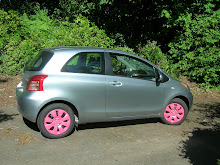It's time I discuss the Indian head bobble. I believe it was my second day in India that someone mentioned the "head bobble" to me and I was not sure what they were talking about. Within an hour I knew. The side-to-side head-tip is everywhere, an unavoidable form of non-verbal communication designed to fit any conversation. Psychologists have proven that facial expressions transcend culture--a smile or frown carries the same meaning everywhere in the world. Gestures, however, are socially learned behaviors specific to individual demographics. Though a nod of the head means "yes" in most Western countries, in the Eastern hemisphere, in India for example, a nod carries no meaning. Indians have neither a nod for yes nor a shake for no, they have only a lateral tipping of the head that means (from what I can gather) "I understand" or "yeah, sure." English is fairly widely spoken in India, but in haggling with rickshaw drivers, asking locals for directions, or any interaction that we Americans have had thus far with non-English speakers, we have been left with only our gestures to express ourselves. Often this scene becomes a confused face-off between Westerners shaking and nodding and Indians bobbling while neither party knows what to make of the other. In classes I have been nodding away when professors speak to me, only to realize later that I never really answered their question, I only shook my head forward and back in what only appears to them as a meaningless, compulsive tic. You don't realize how deeply rooted you are in your habits until they no longer work for you. Desperate to communicate "yes," I have found myself nodding furiously and when that fails I automatically resort to "uh huh," which also means nothing. Almost every time I have tried to express agreement, my natural habits leave me looking like a nodding, grunting fool before I ever remember that in English we actually have a real word for "yes."
Tuesday, January 13, 2009
Subscribe to:
Post Comments (Atom)


This comment has been removed by a blog administrator.
ReplyDeletesuch a deep post today.
ReplyDelete